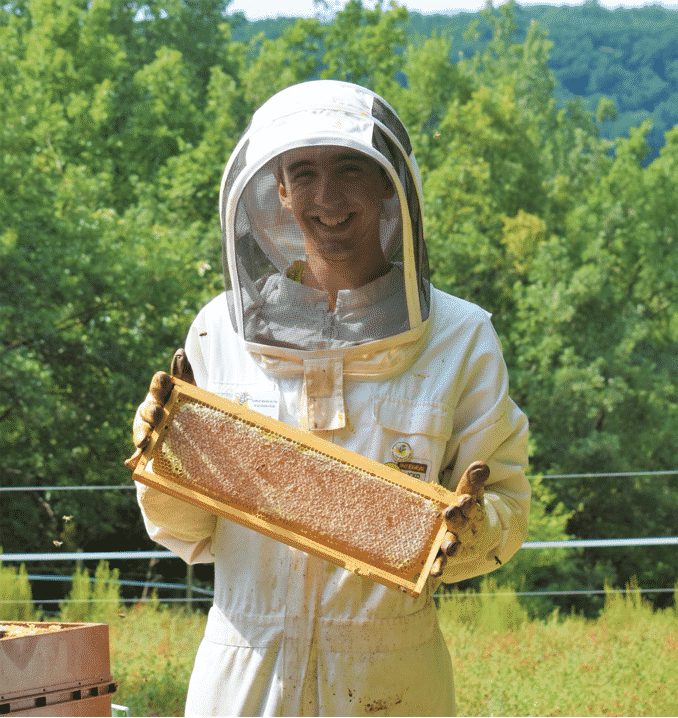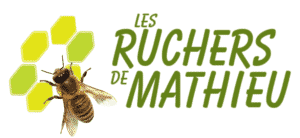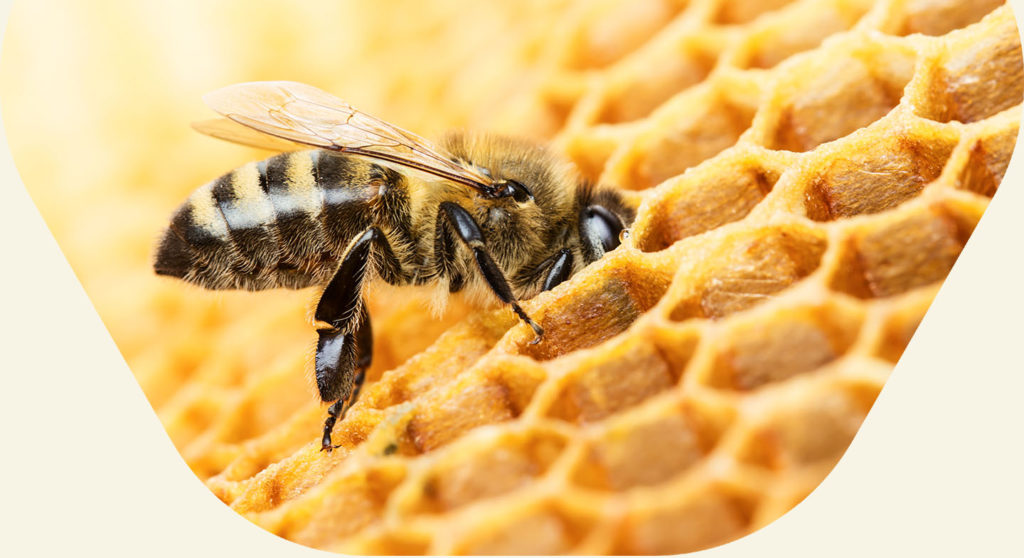API of the month
Mathieu Domecq
Editor-in-chief of the API blog of the month
The season’s almost over and it’s time to prepare for the next one. This month in your API blog of the month, we talk about the level of reserves, which is changing with the beautiful blooms coming out, then we’ll analyse the size of our bee populations as autumn approaches, before ending on a completely different topic: introducing queens.
It’ll be an exciting time with our honey harvest next month. July is the month for the final honey from many plants: sunflowers, chestnut trees, brambles, honeydew. We still need to be vigilant about supers and be prepared.

Reserve levels
From what we’ve seen in recent weeks, beehives near sunflower fields are happy. They are bringing in large quantities of nectar and the supers are visited every week. Depending on the region, other beekeepers will take advantage of the buckwheat, garrigue and heather in the Landes and the Auvergne regions.
Although August is holiday time, when you return, you’ll soon have to get back to beekeeping with the honey harvest coming up!
The hive bodies are expected to be full, with at least two honey frames in July and four frames or more by the end of August to guarantee winter reserves.

The size of the bee population
To get the hives off to a good start in January/February next year, you’ll need to have a large population because the queen’s laying depends on the amount of nurse bees. These will arrive en masse at the end of the summer to produce the royal jelly that will feed the younger generation: our winter bees, which live for almost 120 days instead of 40 days at the moment.
Because of their need to produce this royal jelly, a large stock of protein will be required by bringing in pollen (providing vitellogenin, which will ensure their longevity). If you’re taking advantage of the sunflowers right now, then the stock is secure. Here in the Tarn department, we already have one to two pollen frames in the hives, within just a few days! If not, you’ll need to supplement with protein candy in September.
Introducing fertilised queens
Many amateur beekeepers are asking me for queens at the moment. They want to change theirs because the colony is aggressive or really buzzing. So, let’s take a look at this now!
You’ll get fertilised queens from farmers, delivered in a small crate along with a few bees.
Introducing a fertilised queen is never 100% certain, but the success rate is estimated to be around 95%. This is much better than with a virgin queen (rarely accepted) or a royal cell that may be at risk until the queen is fertilised.

“Can I keep this queen in a crate for a while? The weather is unfavourable for introduction or I’m not by the hive…” In this case, don’t panic. With the accompanying bees, you can keep the queens in their cage for a few days or even a week. The food (candy) that serves as a stopper will feed them. Keep the queen at a good temperature (25 to 35°C), indoors, and in the dark wrapped in crumpled newspaper, for example, to insulate it. But remember, the longer you wait to put it in an orphan beehive, the higher the risk that the queen will never return to her laying.
How do I introduce this crate? There can be no traces of open broods in the hive or royal cells despite a frame being brought in.
You will need to ensure that the hive has food (otherwise add syrup) and maintain a temperature of 35°C to stimulate the ‘new’ queen to lay or the bees to raise.
Remove the small lid from the crate, next to the food stopper, to let the queen come out once the candy is consumed. Place this crate on the head of the frames and cover with a feeder placed upside down. 24 to 48 hours later, look at the condition of the crate.
If the crate is covered with bees: the queen has been accepted! Then you can help her get out.
If there are no bees on the crate and the queen is still inside, this means you have another queen in the hive. You either need to kill the one flying around the hive or use the queen in the crate for another swarm.
If the bees have plugged all the holes in the crate, they are raising other potential queens. You must then search for the royal cells and destroy them. Then unclog the holes in the crate to start the process again.
Sunflowers are in bloom everywhere – photograph the bees and share them with us: they’ll be posted on our site from social media with the hashtag: #apifonda #apiinvert!
We’ll be back next month on your API blog with your faithful partner, Les Ruchers De Mathieu!

LES RUCHERS DE MATHIEU
Honey & Beekeeping Shop
Photos ©lesruchersdemathieu


